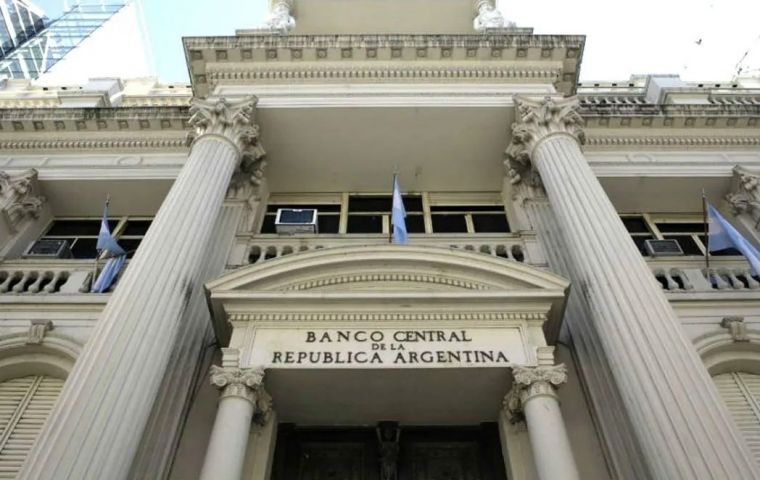MercoPress. South Atlantic News Agency
How far up did the US dollar go Wednesday against the Argentine peso?
 After six days of purchases, Argentina's Central Bank had to sell dollars to avoid a sharper increase in the “blue” rate
After six days of purchases, Argentina's Central Bank had to sell dollars to avoid a sharper increase in the “blue” rate Argentine Economy Minister Sergio Massa seems unable to find a way out of the country's current crisis. In this scenario, the “blue” dollar (a euphemism for “black market”) rose five more pesos Wednesday to close at AR$ 423 as the Central Bank (BCRA) ended with a negative balance of US$197 million, this bringing a streak of six positive rounds to an end. The country risk remained at 2,474 basis points, according to JP Morgan's index.
The new edition of the Export Increase Program (PIE), with a temporary differential exchange rate of AR$ 300 per dollar for the soybean complex and regional economies is not yielding the results the authorities were banking on.
“The soybean dollar did not record any sales in the third round of the week,” a trader quoted by local media said.
Read also: What triggered a new “blue” dollar rise in Argentina?
In a climate of exchange tension and political noise, the BCRA sold US$197 million Wednesday, after which there is uncertainty about whether the Government will comply with the revenues foreseen for the PIE.
In order to boost currency settlements by agricultural exporters and reach an income of US$9 billion, on April 10 the Government implemented the agricultural dollar, which is still in force. However, after seven rounds of sales, it did not register any contribution Wednesday.
Besides, the Argentine government maintains its commitment to comply with the International Monetary Fund (IMF) reserve targets and the sale of foreign currency generates even more concern.
In this third stage of the “soybean dollar,” the BCRA sold US$99 million on the first day the program started operating and Wednesday it sold another US$197 million. On average, it has purchased US$22 million daily.
The measure fixes the exchange rate at AR$ 300 for that sector until May 31 with the hope of collecting about US$ 5 billion in export liquidations. Regional economies are also included until August 31, targeting an additional income of US$4 billion.




Top Comments
Disclaimer & comment rulesCommenting for this story is now closed.
If you have a Facebook account, become a fan and comment on our Facebook Page!